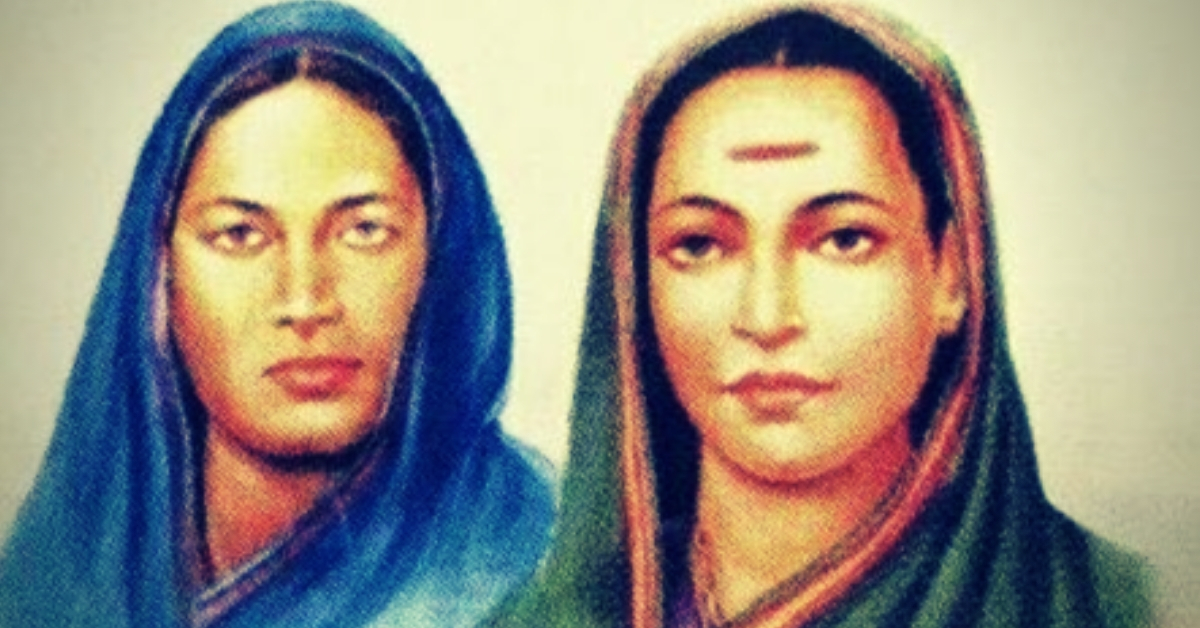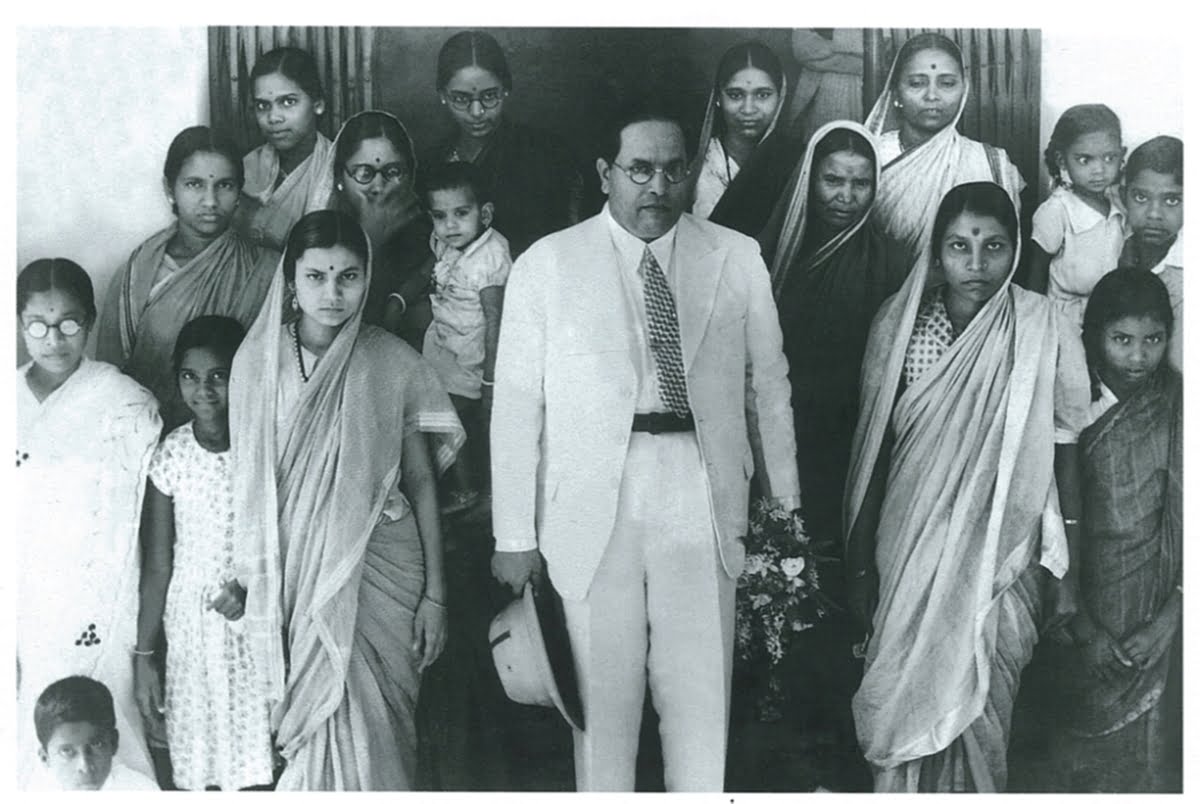In Indian history, the women’s rights movement finds its origins in the Bengal renaissance: a radical shift advocating societal reform, aspiring to adhere to modernity whilst deriving influences from the West. However, a Brahmanical caste-ridden society entails a concealed, bitter truth: historical access to knowledge, power and wealth, accumulated through centuries of oppressive social order. The ‘spotlight’ feminist movement in India represents the privileged upper-castes and channels a narrow discourse that is limited to the rights of upper-caste women. Evidently, such a movement refuses to address caste. This abstinence furthers the oppression against Dalit and Bahujan women, who find themselves at the bottom of the rung, doubly oppressed by both gender and caste based marginalisation.
Dalit feminism, a school of thought and later a movement evolved in resistance to larger social structures. Its emergence can be traced back to 19th-century social reformer Jyotiba Phule. He linked women’s oppression as an integrant of Hinduism. In his words, “To educate women, to cultivate their intelligence, give them respect and to take responsibility for their wellbeing is against the beliefs of Hindus.” Jyotirao argued that societal development was contingent on education for women.
He encouraged his wife Savitri Bai and aunt Sagunabai to read and write. This enraged Jyotiba’s father, who asked them to leave his home. Consequently, they were offered residence by Usman Sheikh and his sister Fatima Sheikh. In 1948, they started the first school for girls at Poona. The school brought together girls of all castes under one roof, thus rejecting Brahmin orthodoxies. Savitri Bai, a Bahujan woman, became India’s first female teacher and a pioneer of feminism. Fatima Sheikh taught at schools that the Phules went on to establish and became India’s first Muslim woman teacher. The camaraderie of these legendary women continues to be a crucial lesson in intersectionality in feminism.

Also read: ‘Dalit’ As A Visual Identity: Critiquing Savarna Hypocrisy Through Film And Literature
The Phules instituted the Satyashodhak Samaj, a socio-spiritual resistance movement that critiqued existing caste and gender hierarchies. The movement was birthed of principles that most may consider ‘too radical’ even today — including equality in marriage, feminism as a precondition of marriage, militant support for scientific temper and rationalism, foundation of atheism, fact-based learning, and values of progressivism in education. The movement was supported by prominent feminist advocates including Tarabai Shinde, who wrote in protest against upper-caste patriarchy in ‘Stri Purush Tulana’, often considered as the modern Indian feminist text.
Although the Phules are largely celebrated for their efforts, very little is known about Fatima Sheikh — so little that we still have no clarity about her date of birth. Such absence of public awareness of the lives of eminent social reformers could only be attributed to caste erasure and non-inclusivity of marginalised identities in mainstream feminism.
There is also a need to recuperate the works of Babasaheb Ambedkar as feminist classics. Dr. Ambedkar insisted on women’s sole ownership of the body. He advocated the use of birth control and contraceptives and voiced against the increasing mortality rate of women during childbirth and unwanted pregnancies. Dr. Ambedkar mocked the foisting of Hindu sexual morality and treated it as a basic human need. In the Hindu Code Bill, he formulated marriage as a contract, devoid of spiritual or sacramental elevation. Dr. Ambedkar was against internal hierarchy in marriage and contended for equality. In 1928, he introduced the Maternity Benefit Bill in the Bombay Presidency and demanded compensation for maternity leave. He opposed the gender wage gap and advocated equal pay for women labourers. His newspapers ‘Mook Nayak’ (1920) and ‘Bahiskrit Bharat’ (1927) contained exclusives covering women’s issues, inspired by works of social reformers like Tulsibai Bansode, which, owing to caste obliteration in mainstream media, still receives limited mainstream attention.
In 1942, the Dalit women’s movement gained popular support and vigour. Meetings began to take place all over Maharashtra. The Dalit Mahila Federation of 1942 is an important landmark in this sense. The conference was addressed by luminaries including Keertibai Dongre, Indirabai Patil and Shantabai Dani, who spoke strongly about the education and uplifting of marginalised people, and the dangers of sub-serving to the impositions of Hindu patriarchy. Sulochanabai Dongre is a notable personage in education, body representation and abortion rights. In her revolutionary address, she advocated the cultivation of the potential of Dalit women. The conference under her presidency reached spectacular conclusions including on the issues of the right to divorce, fair working conditions for women, reservation of seats for women belonging to the Depressed Classes and mandatory education.

Self-assertion and the right to body representation are vital principles of the Dalit feminist movement. These achieved great feats through the work of radicals like Periyar. Periyar’s approach to feminism argued for not just freedom from patriarchy, but sexual freedom in a libertarian sense. He founded the Self Respect Association in 1926 to transform the dismal state of women in South India. Social justice was to be realised first in the family in order to overturn grassroot oppression. Periyar questioned the foundational ideas of patriarchy, opposed conventional emancipation and advocated for mental and imaginative freedom for women. He stood for the sole choice of women in sexual and reproductive life and emphasised upon the urgency of birth control.
Post-independence and in contemporary times, there has been an emergence of powerful Dalit women in the form of journalists, writers and activists. Writers and researchers like Cynthia Stephen, advocate Kiruba Munusamy, activist Ruth Manorama, writer and journalist Yashica Dutt and their years of activism for Dalit rights and representation is spearheading the fight against caste injustice and patriarchy today.
Post-independence and in contemporary times, there has been an emergence of powerful Dalit women in the form of journalists, writers and activists. Writers and esearchers like Cynthia Stephen, advocate Kiruba Munusamy, Ruth Manorama, writer and journalist Yashica Dutt and their years of activism for Dalit rights and representation is spearheading the fight against caste injustice and patriarchy today.
Researcher, author, scholar and activist Gail Omvedt was a prominent intellectual voice in the anti-caste, feminist, labour and famers rights’ movement. She advocated for the abolition of gender exploitation through her work. In the inaugural lecture on feminist discourse organised by the Savitribai Phule University in Pune, she had said, “These shades are not only related to the various theories but also realities of women’s exploitation related to the caste, class, race, gender, community and religion-based exploitation. Though the central question is related to gender, it exists in real life intertwined with these other forms of exploitations.” Omvedt’s was one of the salient voices whose work continues to both educate and enlighten the dialogue on anti-caste social reform even after her passing.
Efforts by Dalit intellectuals in holding the reins of media to educate the masses and channel with an imperative caste based discourse through the likes of journalism, activism and academia proves to be crucial to feminist reform.
‘Writing with Fire’ is a film that follows the story of remarkable women journalists working with India’s first all-women Dalit media outlet ‘Khabar Lahariya’ in the northern province of Uttar Pradesh. The team of reporters investigates Hindu extremism, patriarchial abuse, government corruption and rampant rape culture, among other issues. In a piercing scene, Chief Reporter Meera Devi sits across from a Dalit rape victim and her husband, who painfully recall caste atrocities. The husband later says, “We only trust Lahariya.” The film documents their pivot to digital journalism after 14 years of running a print newspaper. Khabar Lahariya’s journalism is distinct, ravishing and inexplicably linked to democracy, and their powerful vision voices some of the most gravely marginalised people of India.
Also read: Towards A Dalit Feminist Standpoint – The Emancipatory Project For All Women
Other prominent journalists include Meena Kotwal, Founding Editor of The Mooknayak and ex-BBC Hindi, National Dastak and freelance journalist whose excellent coverage of issues concerning the marginalised in India has made her one of the most credible journalists contributing to the anti-caste discourse.

Caste erasure tends to conceal the historical struggles and accomplishments of Dalit revolutions, while actively silencing the voices of people working towards women’s liberation and caste justice today. Such non-inclusivity is detriminental to the very essence of feminism, which is fundamentally built on the collective struggle of all women, especially the women from marginalised sections of the society.
The voices of these incredible women have an exigent and unavoidable clarity: they know what their success means to other marginalised women. In recent times, Dalit youth have rightfully asserted their presence in the social sphere and spoken about caste invisibilisation.
Caste marginalisation in feminism continues to be rampant and this cannot be stressed upon enough. The mainstream feminist movement continues to lack representation of DBA women and fails to, rather, neglects to consider their experiences. This furthers explains the intentional abandonment of the work of prominent reformers and activists of Dalit feminism. Caste erasure tends to conceal the historical struggles and accomplishments of Dalit revolutions, while actively silencing the voices of people working towards women’s liberation and caste justice today. Such non-inclusivity is detriminental to the very essence of feminism, which is fundamentally built on the collective struggle of all women, especially the women from marginalised sections of the society.
Shreeja Rao is a law student based in Pune, India. She writes about all things gender, culture and politics from a Dalit feminist lens. Growing up with a marginalised identity, Shreeja strongly believes in social justice for the disadvantaged and aspires to achieve that through her work. She also has a keen interest in academia, which she pursues with an intersectional and inclusive focus. You can find her on Instagram.
Featured image Source: Gauri Lankesh News





The article ‘ The historical Erasure of India’s Dalit feminism’ is very good and informative.
I observed a few errors. Could be typographical error. Mahatma Phule and Savitri Bai Phule started the first school for girls in Pune in 1848. Periyar stared ‘Self-respect Movement’ in 1926 which is functioning now as Dravidar Kazhagam.